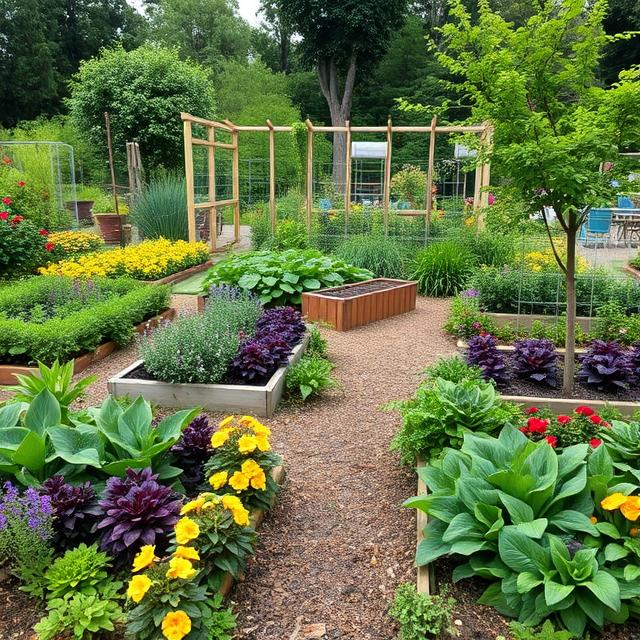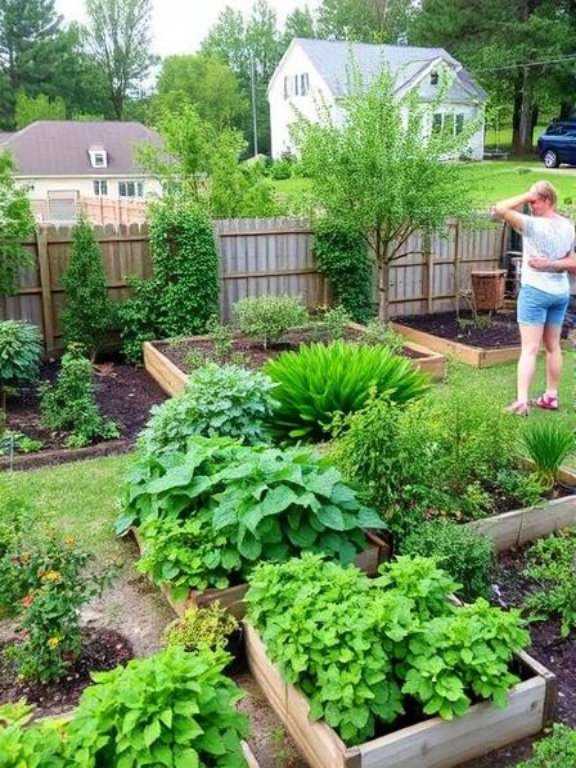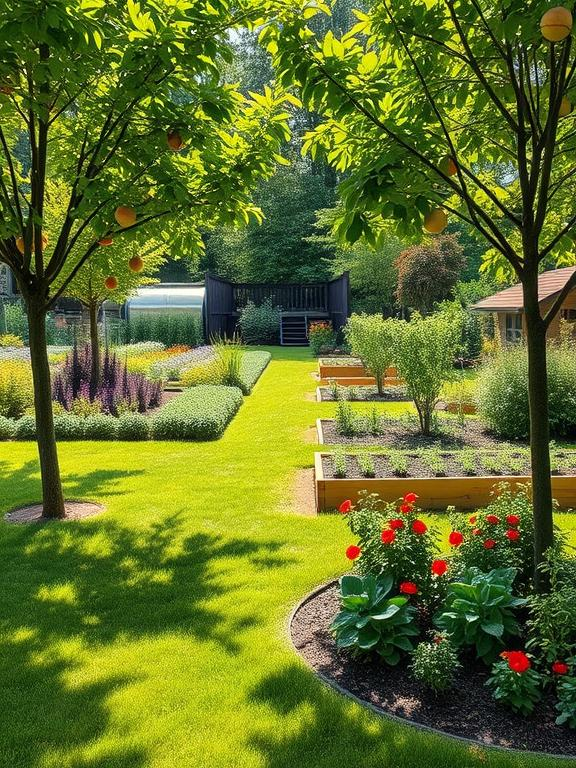A sustainable approach to homegrown food security & ecosystem health.
🌿Imagine Never Worrying About Food Prices Again: Your Foodscape Solution
Foodscapes turn edible plants into both a visual and functional masterpiece, blending natural beauty with practical, sustainable living. More than a source of nourishment, foodscaping creates thriving, biodiverse ecosystems that support both people and the planet. By integrating fruit-bearing trees, raised vegetable beds, and pollinator-friendly plants, homeowners and communities cultivate self-sufficiency, resilience, and a deeper connection to their environment. A well-designed foodscape isn’t just about growing food—it’s about creating a sustainable, affordable, and nourishing future right in your backyard.
🏡 “Every human being has the right to adequate food. However, this right will not be realized without sustainable food systems that support healthy choices.” – FAO
- 🌱 Self-reliance & savings – Feel empowered knowing your family's food comes from your own land.
- 🌍 Eco-friendly & sustainable – Minimize chemicals & carbon footprint.
- 🐝 Stronger local ecosystems – Support biodiversity.
Foodscaping aligns with this principle by empowering individuals and communities to take control of their food sources. With rising food costs and increasing concerns over industrial food production, homegrown solutions offer:
- Self-reliance & cost savings – Watch your grocery bills shrink while your garden grows.
- Environmental impact reduction – Take pride in reducing your carbon footprint with every meal.
- Stronger local ecosystems – Support biodiversity and pollinators while reducing soil erosion and water waste.
By integrating sustainable agriculture into residential landscapes, foodscaping fosters a resilient food system that benefits both people and the planet.

Your Landscape, Your Food System
A food environment is the space where individuals interact with food—from access and affordability to preparation and consumption. Foodscapes transform ordinary yards into productive ecosystems that align with sustainable, healthy eating habits.

Physical Environment
A mix of edible perennials, fruit trees, and raised garden beds makes fresh food easily accessible.

Economic
Benefits
Home food production reduces dependency on expensive grocery store produce.

Sociocultural Impact
A well-designed foodscape encourages community sharing, education, and a deeper connection to nature.
By integrating functional landscaping with food production, foodscaping turns everyday spaces into nourishing, thriving environments that promote wellness and sustainability.
Foodscapes: A Holistic Solution for Sustainable Living
Foodscapes are more than just gardens—they represent a systemic shift in how people interact with food. Unlike traditional gardens, they integrate seamlessly into existing landscapes, offering both functionality and aesthetics while supporting broader food system changes.
Today
Behavioral Benefits
Encourages homegrown, seasonal eating habits, reducing reliance on processed foods.
Near Future
Sociocultural Integration
Spaces designed for both aesthetic appeal and food production redefine how people perceive edible landscapes.
Your Future Self
Organizational Impact
Foodscapes promote local food networks, community gardens, and urban agriculture.
Treating food as an integral part of landscape design, foodscapes empower people to reshape their relationship with food, fostering healthier, more sustainable choices in daily life.
✅ Ready to transform your yard into a sustainable, food-producing oasis?
Our expert team at Skeeta.pro designs and implements foodscapes that integrate beauty, biodiversity, and resilience.
